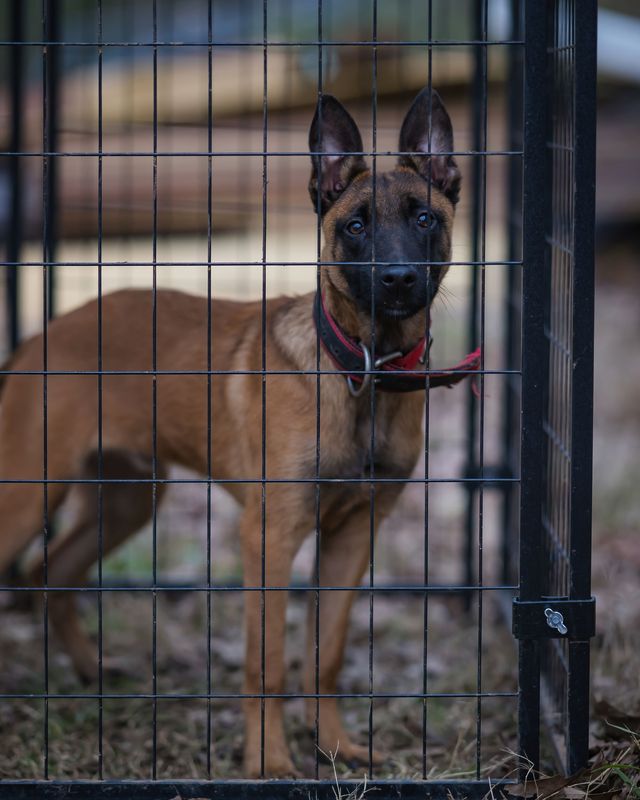Why Crate Train?
Crates can provide dogs with a feeling of security and comfort, and crate training can help them feel less anxious. It’s important to understand the benefits of crate training your dog, as well as the negative consequences of not doing so. We’ll explore how to crate train your dog effectively and safely, and the reasons why it can benefit both you and your furry friend.

Benefits of Crate Training Your Dog 🐶👍
Crate training can help with a variety of issues, including house training, anxiety, and destructive behaviour. By providing your dog with a space of their own, you can give them a sense of security and a safe place to retreat to when they need it.
Crate training can also make house training your dog much easier. Dogs are naturally clean animals and will not want to soil their living space. By keeping your dog in a crate when you’re not able to supervise them, you can prevent them from having accidents in the house.
In addition to these benefits, crate training can also help prevent destructive behavior. Dogs that are left alone for long periods of time can become bored and anxious, leading to destructive behavior like chewing or digging. A crate can provide them with a safe and secure place to rest and relax, helping to prevent destructive behavior.
Negatives of Not Crate Training Your Dog 🚫🐾
While crate training can be highly beneficial for dogs, not crate training them can lead to negative consequences. Dogs that are not crate trained may have difficulty adjusting to new environments or situations, leading to anxiety and destructive behaviour.
Additionally, not crate training your dog can make house training much more difficult. Without a designated space to rest and sleep, dogs may have accidents in the house, making it difficult to train them to go outside.

Going on holiday or leaving your dog in a new environment could be a nightmare and potential safety hazard if the proper structure is not established early. Creating good routines, including crate training, is essential for the overall health and safety of your dog.
How to Crate Train Your Dog 🐕👨🏫
- Choose the proper crate: This first step is very important. The crate should be big enough for them to stand up, turn around, and lie down comfortably. It should not be so big that they can use one end as a bathroom and the other as a sleeping area. Purchase a high quality crate and avoid wire crates. Dog can easily injure themselves by attempting to escape from a poorly constructed crate.
- Slow and Steady Introduction: Introduce your dog or puppy to the crate slowly by leaving the crate door open and placing high value rewards inside, such as treats or toys. Encourage your dog to explore the crate. Praise your dog for any positive interactions – the more comfortable your dog feels, the more inclined they will be to return.
- Use positive reinforcement: Positive reinforcement will encourage your dog to enter and stay in the crate. Offer treats and praise when your dog goes into the crate and stays there. Keep up this encouragement throughout training.
- Associate the crate with positive experiences: Use the crate during positive experiences, such as feeding time or playtime. This will help your dog associate the crate with positive things. Your dog will be much more likely to go into the crate without prompting if they feel it is a safe space.
- Gradually increase the time your dog spends in the crate: Start by leaving your dog in the crate for short periods of time while you are home. Gradually increase the time they spend in the crate until they are comfortable staying in the crate for longer periods of time.
- Do not use the crate as punishment: It’s also important to never use the crate as a form of punishment, as this can cause anxiety and fear in your dog. Instead, use positive reinforcement and patience to help your dog adjust to the crate.
- Be patient: Crate training can take time, so be patient with your dog. Some dogs may take longer to get used to the crate than others and that is okay. Patience and consistency are key.

Make Sure Your Crate Is Safe
Conclusion 📝
In conclusion, crate training your dog can have many benefits, including helping with house training, anxiety, and destructive behaviours. By introducing your dog to the crate slowly and using positive reinforcement, you can help them feel comfortable and safe in their new space. Remember to take it slow and be patient, and never use the crate as a form of punishment. Crate training can be highly beneficial for both you and your furry friend, helping to create a safe and happy home environment.
If you’re struggling with crate training your dog or want more information on how to do so effectively, consider reaching out to Off Leash K9 Training London. Our team of expert trainers can help you create a customized training plan that’s tailored to your dog’s unique needs.
To see some of the thousands of owners and dogs we helped, please visit our YouTube channel. Check out adorable photos and videos on our Facebook page or follow us on Instagram. Our exceptional training and trainers have earned 200+ Google 5-star reviews, which shows our commitment to providing quality training to dogs and their owners.
We hope you’ve found this article useful. Contact us at 0203 890 3400 or customerservice@olk9.co.uk to book your dog’s training session today. To schedule a free phone consultation with one of our professionals, click here to select the date and time that fits your diary best.




